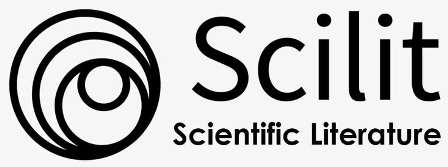إزالة صبغة الكونغو الحمراء باستخدام بولي فينيلدين فلوريد (PVDF) بوليمر في أغشية الترشيح الفائق
DOI:
https://doi.org/10.31272/jeasd.1611الكلمات المفتاحية:
صبغة الكونغو الحمراء ، بوليمر PVDF ، انقلاب الطور ، تحضير الأغشية ، إزالة الصبغة ، الترشيح الفائقالملخص
لإزالة صبغة الكونغو الحمراء ، يتم اتباع عمليات أغشية الترشيح الفائق (UF) باستخدام أغشية شبه منفذة. سيتم تحضير الأغشية الثلاثة من بوليمر بولي فينيلدين فلورايد (PVDF). في هذه الدراسة تمت دراسة توصيفات بوليمر PVDF لمعرفة تأثير تركيز البوليمر على أداء تطبيق أغشية الترشيح الفائق. باستخدام مجهر القوة الذرية (AFM) ، تم فحص خشونة الغشاء الناتج. أيضا ، لمقارنة تكوين بنية الغشاء لكل نوع بوليمر وشرح توزيع المسام على الأغشية تم إجراء اختبار الفحص المجهري الإلكتروني (SEM). كما تم تحديد عدد ونوع وتوزيع الذرات في الأغشية المنتجة باستخدام مطياف تشتت الطاقة (EDS). أخيرًا ، تم فحص معدل التدفق ورفض الصبغة باستخدام عملية الترشيح عبر التدفق. أظهر كل اختبار من هذه الاختبارات أن تركيز 17٪ من بوليمر فلوريد البولي فينيلدين (PVDF) كان الخيار الأمثل لتطبيق UF. وفقًا لنتائج الاختبار ، قدم غشاء PVDF بنسبة 17 ٪ أفضل رفض للصبغة وتدفق الماء.
المراجع
] H. M. Alayan, I. R. Hussain, F. H. Kamil, M. M. Aljumaily, and N. A. Hashim, “Proficiency of few-layered graphene oxide nanosheets as promising sorbents for dye pollution management,” J. Environ. Eng., vol. 146, no. 8, p. 04020090, Aug. 2020. https://doi.org/10.1061/(ASCE)EE.1943-7870.0001774
] M. M. Hassan et al., “Studying the performance of various polymeric ultrafiltration membranes in dye removal,” Desalination Water Treat., vol. 280, pp. 139–156, 2022. https://doi.org/10.5004/dwt.2022.29076
] M. K. Alomar et al., “N, N-Diethylethanolammonium chloride-based DES-functionalized carbon nanotubes for arsenic removal from aqueous solution,” Desalination Water Treat., vol. 74, pp. 163–173, 2017. https://doi.org/10.5004/dwt.2017.20602
] S. Ghorai, A. K. Sarkar, A. B. Panda, and S. Pal, “Effective removal of Congo red dye from aqueous solution using modified xanthan gum/silica hybrid nanocomposite as adsorbent,” Bioresour. Technol., vol. 144, pp. 485–491, 2013. https://doi.org/10.1016/j.biortech.2013.06.108
] N. H. H. Hairom, A. W. Mohammad, and A. A. H. Kadhum, “Nanofiltration of hazardous Congo red dye: Performance and flux decline analysis,” J. Water Process Eng., vol. 4, pp. 99–106, 2014. https://doi.org/10.1016/j.jwpe.2014.09.007
] C. Lavanya et al., “Environmental friendly and cost effective caramel for Congo red removal, high flux, and fouling resistance of polysulfone membranes,” Sep. Purif. Technol., vol. 211, pp. 348–358, 2019. https://doi.org/10.1016/j.seppur.2018.10.012
] A. M. S. Jorge, K. K. Athira, M. B. Alves, R. L. Gardas, and J. F. B. Pereira, “Textile Dyes effluents: a Current Scenario and the Use of Aqueous Biphasic Systems for the Recovery of Dyes,” Journal of Water Process Engineering, vol. 55, p. 104125, Oct. 2023, doi: https://doi.org/10.1016/j.jwpe.2023.104125.
] [8]M. Premaratne, G. Nishshanka, V. Liyanaarachchi, P. Nimarshana, and T. U. Ariyadasa, “Bioremediation of Textile Dye Wastewater Using microalgae: Current Trends and Future Perspectives,” Journal of Chemical Technology & Biotechnology, vol. 96, no. 12, pp. 3249–3258, Jul. 2021, doi: https://doi.org/10.1002/jctb.6845.
] R. R. Abdullah et al., “Novel photocatalytic polyethersulfone ultrafiltration (UF) membrane reinforced with oxygen-deficient tungsten oxide (WO2.89) for Congo red dye removal,” Chem. Eng. Res. Des., vol. 177, pp. 526–540, 2022. https://doi.org/10.1016/j.cherd.2021.11.008
] W. K. Al-Musawy, M. H. Al-Furaiji, and Q. F. Alsalhy, “Synthesis and characterization of PVC-TFC hollow fibers for forward osmosis application,” J. Appl. Polym. Sci., vol. 138, no. 35, p. 50871, 2021. https://doi.org/10.1002/app.50871
] S. M. Doke and G. D. Yadav, “Novelties of combustion synthesized titania ultrafiltration membrane in efficient removal of methylene blue dye from aqueous effluent,” Chemosphere, vol. 117, pp. 760–765, 2014. https://doi.org/10.1016/j.chemosphere.2014.09.027
] J. Huang et al., “Evaluation of micellar enhanced ultrafiltration for removing methylene blue and cadmium ion simultaneously with mixed surfactants,” Sep. Purif. Technol., vol. 125, pp. 83–89, 2014. https://doi.org/10.1016/j.seppur.2014.01.043
] S. Mondal, H. Ouni, M. Dhahbi, and S. De, “Kinetic modeling for dye removal using polyelectrolyte enhanced ultrafiltration,” J. Hazard. Mater., vol. 229, pp. 381–389, 2012. https://doi.org/10.1016/j.jhazmat.2012.06.007
] X. Li and X. Lu, “Morphology of polyvinylidene fluoride and its blend in thermally induced phase separation process,” J. Appl. Polym. Sci., vol. 101, no. 5, pp. 2944–2952, 2006. https://doi.org/10.1002/app.23932
] M. G. Buonomenna et al., “Poly(vinylidene fluoride) membranes by phase inversion: The role the casting and coagulation conditions play in their morphology, crystalline structure and properties,” Eur. Polym. J., vol. 43, no. 4, pp. 1557–1572, 2007. https://doi.org/10.1016/j.eurpolymj.2007.01.030
] S. Darvishmanesh et al., “Novel polyphenylsulfone membrane for potential use in solvent nanofiltration,” J. Membr. Sci., vol. 379, no. 1–2, pp. 60–68, 2011. https://doi.org/10.1016/j.memsci.2011.05.045
] Z. Zhang et al., “Effect of zero shear viscosity of the casting solution on the morphology and permeability of polysulfone membrane prepared via the phase-inversion process,” Desalination, vol. 260, no. 1–3, pp. 43–50, 2010. https://doi.org/10.1016/j.desal.2010.04.062
] A. Akbari et al., “Influence of PVDF concentration on the morphology, surface roughness, crystalline structure, and filtration separation properties of semicrystalline phase inversion polymeric membranes,” Desalination Water Treat., vol. 46, no. 1–3, pp. 96–106, 2012. https://doi.org/10.1080/19443994.2012.677408
] M. Mulder, Basic Principles of Membrane Technology, 2nd ed. Dordrecht, Netherlands: Springer, 1996.
] C. Sun and X. Feng, “Enhancing the performance of PVDF membranes by hydrophilic surface modification via amine treatment,” Sep. Purif. Technol., vol. 185, pp. 94–102, 2017. https://doi.org/10.1016/j.seppur.2017.05.030
] K. Boussu et al., “Roughness and hydrophobicity studies of nanofiltration membranes using different modes of AFM,” J. Colloid Interface Sci., vol. 286, no. 2, pp. 632–638, 2005. https://doi.org/10.1016/j.jcis.2005.01.095
] M. M. Aljumaily et al., “Modification of poly(vinylidene fluoride-co-hexafluoropropylene) membranes with DES-functionalized carbon nanospheres for removal of methyl orange by membrane distillation,” Water, vol. 14, no. 9, p. 1396, 2022. https://doi.org/10.3390/w14091396
] M. Khayet, C. Cojocaru, and M. García-Payo, “Experimental design and optimization of asymmetric flat-sheet membranes prepared for direct contact membrane distillation,” J. Membr. Sci., vol. 351, no. 1–2, pp. 234–245, 2010. https://doi.org/10.1016/j.memsci.2010.01.052
] A. Tiraferri et al., “Relating performance of thin-film composite forward osmosis membranes to support layer formation and structure,” J. Membr. Sci., vol. 367, no. 1–2, pp. 340–352, 2011. https://doi.org/10.1016/j.memsci.2010.11.014
] M. B. Abid, R. A. Wahab, M. A. Salam, I. A. Moujdin, and L. Gzara, “Desalination technologies, Membrane distillation, and electrospinning, an Overview,” Heliyon, vol. 9, no. 2, p. e12810, Feb. 2023, doi: https://doi.org/10.1016/j.heliyon.2023.e12810.
] K. Liu, Razi Epsztein, S. Lin, J. Qu, and M. Sun, “Ion–Ion Selectivity of Synthetic Membranes with Confined Nanostructures,” ACS Nano, vol. 18, no. 33, pp. 21633–21650, Aug. 2024, doi: https://doi.org/10.1021/acsnano.4c00540.
] R. Javeed Ganaie, S. Rafiq, and A. Sharma, “Recent Advances in Physico-chemical Methods for Removal of Dye from Wastewater,” IOP Conference Series: Earth and Environmental Science, vol. 1110, no. 1, p. 012040, Feb. 2023, doi: https://doi.org/10.1088/1755-1315/1110/1/012040.
] ]P. Karami, M. M. H. Mizan, C. Ammann, A. Taghipour, J. B. P. Soares, and M. Sadrzadeh, “Novel Lignosulfonated Polyester Membranes with Remarkable Permeability and Antifouling Characteristics,” Journal of Membrane Science, vol. 687, p. 122034, Dec. 2023, doi: https://doi.org/10.1016/j.memsci.2023.122034.
التنزيلات
Key Dates
الإستلام
النسخة النهائية
الموافقة
النشر الالكتروني
منشور
إصدار
القسم
الرخصة
الحقوق الفكرية (c) 2025 Mohammed M. Hassan, Zaidun N. Abudi, Mustafa H. Al-Furaiji, Rouhollah Y. Farsani (Author)

هذا العمل مرخص بموجب Creative Commons Attribution 4.0 International License.
















